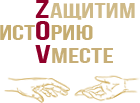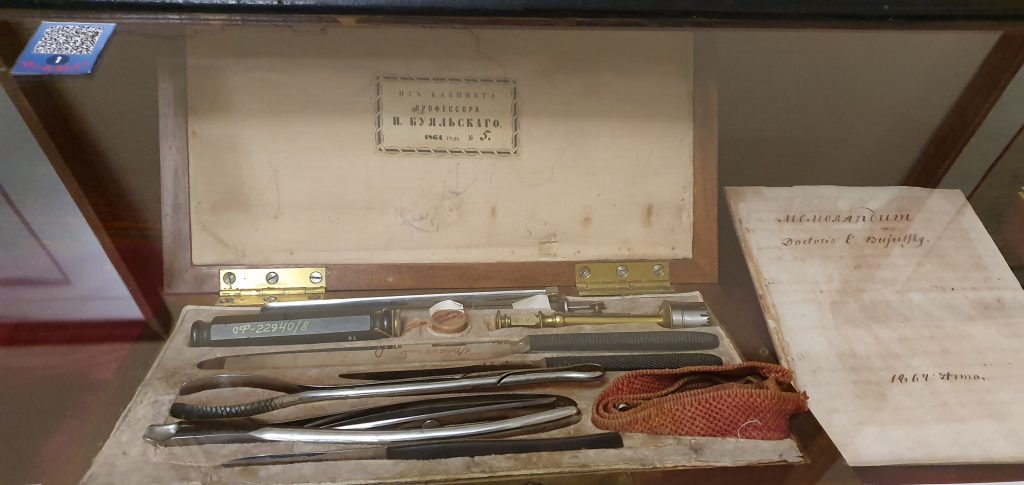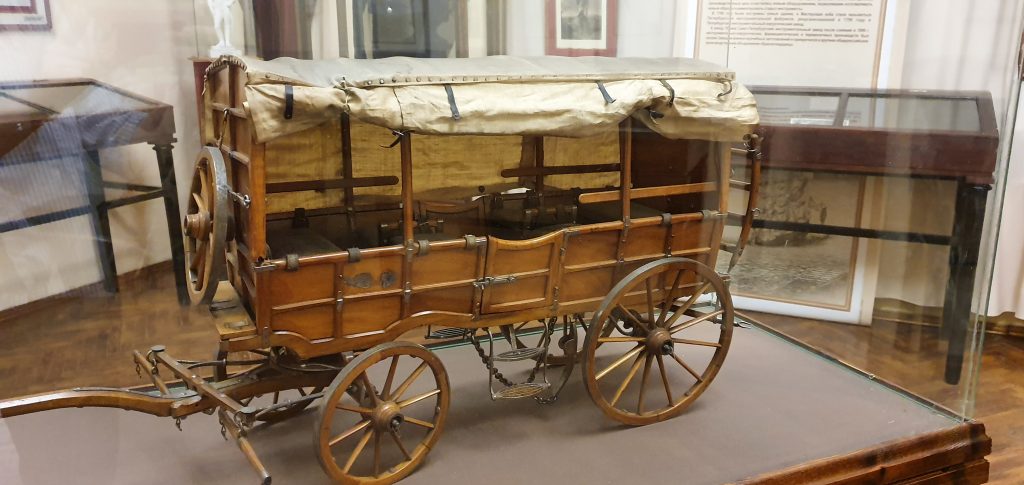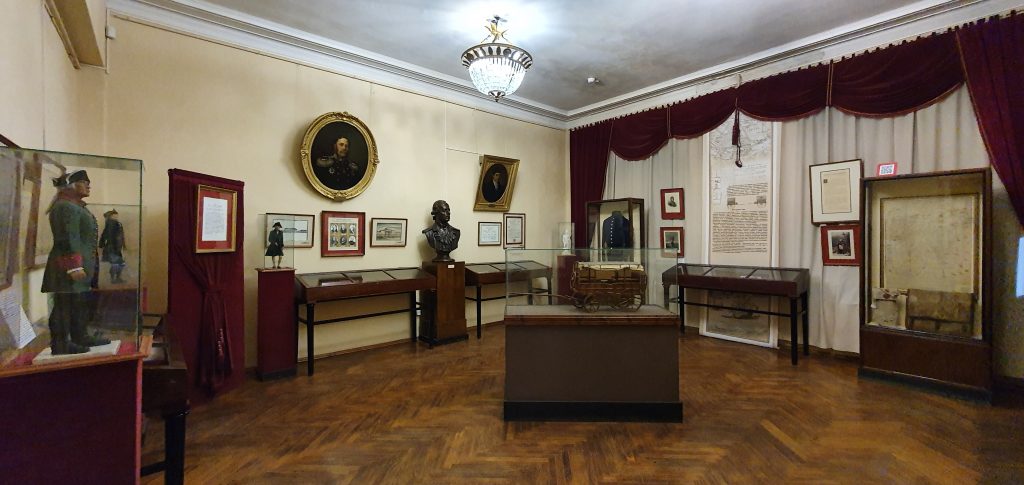The hall is devoted to the development of science, higher medical education and healthcare in Russia in the eighteenth and first half of the nineteenth century.
In the second half of the eighteenth century, along with the development of medical science and civil healthcare, the foundation was laid for military health care, its governing bodies were reformed, and norms of international humanitarian law were formed.
In 1788–1792 the medical board was headed by Baron Ivan Fedorovich Fitingof. His activities in reforming medical education played a significant role in the development of domestic medicine, including the establishment of a Russian school of professors.
Not only military doctors but also the outstanding commanders of the eighteenth century such as Peter the Great, P. A. Rumyantsev, G. A. Potemkin, A. V. Suvorov and M. I. Kutuzov took care of preserving the health of the Russian soldier).They always tried to follow the rules and customs of warfare, were distinguished by special mercy in their treatment of prisoners and civilians, and tried to fight with "little blood." So, for example, A.V. Suvorov in his famous book “The Science of Winning” demanded: “Those who do not protect people, for the officer — arrest, for the non-commissioned officer and corporal — sticks, and even the sticks for those who do not protect themselves.”
The most important event in the history of domestic medicine was the creation in St. Petersburg in 1798 of the Medical and Surgical Academy, which became in the XIX century training center for military medical personnel, a unique complex for the development and improvement of medical science and practice. Among the professors and teachers of the academy who made a significant contribution to domestic medicine were I.F. Bush, P.A. Zagorsky, N.I. Pirogov, I.P. Pavlov, N.A. Velyaminov, V.A. Oppel and many other famous scientists.
A major role in the creation of the St. Petersburg and Moscow Medical and Surgical Academies was played by the Chief Director of the Medical College, Baron Alexey Ivanovich Vasiliev. A.I.Vasiliev was an official and did not have a medical education, but this did not disturb him from making a huge contribution to the history of Russian medicine.
The hall also has portraits of other prominent medical figures who have made an invaluable contribution to the development of medical science, healthcare and higher medical education in Russia.
In the 60s of the XIX century, the Medical and Surgical Academy entered the era of its scientific prosperity thanks to the energy of its president P. A. Dubovitsky. Under him, the curriculum was radically revised, the composition of teachers changed, and a national scientific medical school was formed.
Further, the Heads of the Medical and Surgical Academy were: P.A. Zagorsky (1803-1805), I.P. Frank (1805-1808), J.V. Willie (1808-1838), I.V. Schlegel (1838-1851), V.V. Pelican (1851-1856).
The exposition includes: the work of the professor of the Moscow Medical and Surgical Academy M. Mudrov “On the benefits and subjects of military hygiene or science to preserve the health of military personnel”, a bust of the outstanding military doctor and epidemiologist D. S. Samoilovich (sculptor V. Bogomolov), a portrait of the famous Russian therapist P. A. Charukovsky (artist K. D. Zabolotsky) and his book “Experience in the system of practical medicine”.
The windows display: photographs and manuscripts of professors of the Medical and Surgical Academy S. A. Gromov (1776-1856) and S. F. Khotovitsky (1791-1885), the uniform of the battalion surgeon of the Saxon army, who participated in the Napoleonic army in the war against Russia, porcelain figurine. "Wounded Napoleonic dragoon."
The engraving scheme was compiled for Emperor Alexander I by the famous doctor of the time Vasily Malakhov, which in essence is one of the first classifications of diseases.
The fate of the Scottish baronet Sir James Willie, known in Russia as Yakov Vasilievich Willie (1768-1854), can serve as an example of selfless service to medicine and love for Russia.
When he received his university education, J.V. Willie arrived in Russia at the invitation of the Russian government, among other foreign doctors. In less than 10 years, he became a court cameraman and life-surgeon. In 1806, Y. V. Villier was appointed Chief Medical Officer of the Russian Army and remained in this position for almost 50 years. He did a lot for the development of Russian military medicine, especially during the Napoleonic Wars.
Also, J.V. Willie made a huge contribution to the development of medical education. For 30 years he was president of the Medical-Surgical Academy in St. Petersburg.
The bust of Y. V. Villier by I.V. Krestovsky, various documents related to the life and work of Y. V. Willie are presented in the hall.
Particular attention in the exposition is also given to the life and work of the outstanding Russian surgeon and anatomist Academician I.V.Buyalsky (1789-1866). Ilya Vasilievich - one of the founders of topographic anatomy in Russia. He created the Anatomical and Surgical Tables, translated into many foreign languages.
One of the first I.V. Buyalsky began to use anesthesia, blood transfusion, antiseptic drugs in Russia, developed a method of embalming, as well as the technique of "ice sculptural" anatomy. Presented in the window: medal in honor of the 50th anniversary of the medical activity of I.V. Buyalsky and the “Memorandum”, in which for 50 years he made various notes from his medical practice, etc.
The exposition of this hall ends with the painting “Assistance on the battlefield”, relating to the period of the Crimean War.





